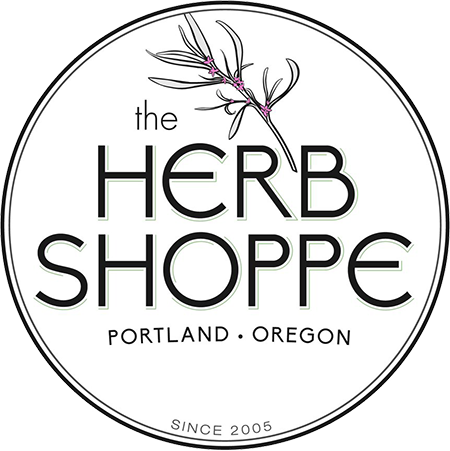Technically speaking, our herb of the month isn’t really an herb at all. Some may even say they are a fun-guy…
Meet Inonotus obliquus, otherwise known as chaga. While this mushroom has been used for centuries in the northern hemisphere, it has acquired most of its popularity within the last few decades as knowledge of herbal medicine expands, as mushroom medicine has become trendy, and as chaga is gaining recognition within modern medicine for its profound medicinal benefits verified through scientific studies.
Chaga is found in the northern hemisphere, specifically in northern regions of North America, Finland, Russia, Japan, and Alaska. Chaga is coined as the "king of mushrooms", and also as “the diamond of the forest”, for its renowned medicinal benefits. Don’t be fooled, however, chaga does not resemble a diamond! This mushroom produces a very rich brown woody growth, or conk, in which the exterior resembles a lump of burnt coal. The inside, however, is normally a lovely burnt orange color. Chaga grows on birch trees where clusters can weigh over 30 pounds and grow up to a foot in diameter.
There is a Finnish folktale about chaga, in which a very old man with a long white beard found himself alone in a birch forest and was hardly able to stand due to his old age. He came across chaga, consumed it, and found that his hair quickly turned jet black and his youth returned to him! The message of this folktale reigns true, as chaga has been used for centuries in folk medicines of Russia, China, Korea, Eastern Europe, and within indigenous Siberian cultures for its medicine. The earliest documentation of chaga dates back to 16ce Russia, where it is recorded that the Khanty people of Siberia were using chaga medicinally by grinding it and adding it to soups, as well as making “soap water” with the mushroom by adding chaga charcoals to water and utilizing it as a disinfectant. Other traditional uses of chaga folk medicine include treating skin conditions, respiratory ailments, and for boosting endurance.
Alongside chaga’s nicknames of “mushroom king” and “diamond of the forest”, chaga has also been referred to as “black gold” because of its immense medicinal benefits. It is an adaptogen, antiviral, anti-inflammatory, high in fiber, and packed with antioxidants. Chaga stimulates white blood cells, which help fight harmful bacteria and pathogens in the body. Chaga may help lower blood sugar, lower cholesterol, and may prevent the growth of cancerous cells and tumors according to recent studies. Chaga contains vitamins D and B, calcium, magnesium, iron, potassium, selenium, and zinc to name a few. This medicinal mushroom also helps to support a healthy immune system, a balanced circadian rhythm, and improve digestive function by assisting in bile production, the breakdown of foods, and nutrient absorption within the gut. Chaga is a mild stimulant and actually became a popular coffee substitute during World War ll when rations were low. In fact, you can probably chaga in most herbal coffee alternative blends on the market thanks to its mild vanilla flavor and gentle stimulant effects.
Thanks to modern science, we now are quantifying the effects of chaga for its ability to protect against degenerative diseases such as Alzheimer's, due to chaga’s presence of Superoxide dismutase (SOD), which helps neutralize the damage done by free radicals. Chaga has up to 50x more SOD’s than other known superfoods such as leafy greens, seaweed, and truffles! This king of mushrooms is also being studied for its ability to fight oxidative stress, which makes it a potential powerful plant ally for preventing heart diseases and cancer. Unfortunately, though, the rising popularity of this mushroom puts chaga at risk due to overharvesting when wildcrafting. If you see this diamond in the woods, be sure to only take a small amount, or perhaps, just leave it be.
In my experience working with chaga, I feel that the medicine of this mushroom reaches deep down into your core, and grounds you firmly into the earth. It is a really amazing plant ally to work with during the winter months when we spend so much time indoors, as it helps to ground us and connect us with the winter season. After all, chaga fruits during the winter months, and is found on the most beautiful birch trees. Another reason chaga is a great winter ally is because it will help to keep your immune system strong amidst the cycling seasonal colds and flus. As with most medicinal mushrooms, the best way to receive the most potent extraction of medicine is through a double-extraction of the mushroom in water, and in alcohol. However, consuming dried chaga tea or tincture will still provide you with its medicine! Our Winter Solstice tea blend is my favorite way to ingest chaga. This tea is blended with rosehips, orange peel, linden, borage, cinnamon, echinacea, rooibos, and chaga. Not only is this blend supportive of the immune system and packed with vitamin C, but it’s also warming, heart-softening, grounding, earthy, and seriously delicious.
Sources:
Chaga Mushroom: Uses, Benefits and Side Effects (healthline.com)
Chaga Mushroom: Nutrition Facts, Health Benefits, and Recipes (foodsforbetterhealth.com)
How to Choose the Best Quality Chaga Mushroom Supplements (ommushrooms.com)
10 Proven Health Benefits of Chaga - Healthy Focus
Chaga Mushroom Benefits: 13 Unique Reasons for Taking Chaga - Natures Rise

